|
While some of us have grown up with one hand on the computer mouse and a smartphone in the other, others have more gradually learned to love the virtual world and all the convenience that it offers. Some, like my dear husband, a bit more reluctantly bring up the rear, but for all of us, the virtual world offers both well known, and as yet undiscovered, opportunities. One of these opportunities is called Telehealth. It may also be referred to as Telemedicine or Telerehabilitation. Whatever the term, what it entails is, simply, connecting with your healthcare provider over the internet, usually through video, instead of in a common physical space. Telemedicine has already been in use for several years by everyone from mental health practitioners to medical doctors, but the recent virus outbreak and the subsequent social distancing efforts have catapulted it into our awareness. Thanks to Telehealth, patients, ranging from children with special needs to adults of all ages with musculoskeletal complaints, pain, weakness or balance problems, have been able to continue to receive the care that they need. Telehealth has enabled patients to prevent the worsening of chronic pain, and the loss of balance and function, that a long break in their care otherwise might have caused. Private insurers have fast-forwarded the inclusion of Telehealth into services that they cover, United Healthcare Medicare Advantage just joined the insurers that cover Telehealth, and traditional Medicare may, hopefully, not be far behind. To many prospective patients Telehealth is still a new option. What follows is a list of frequently asked questions, to help you get acquainted with what awaits at the most recent frontier of healthcare, and how you can benefit now. Why should I use Telehealth instead of being seen in a physical therapy office? At this time, one of the benefits is more obvious than ever. Telehealth offers therapy without the need to leave your home, and the recent stay-at-home order, while not preventing physical therapy in a physical office, has made many choose the stay-at-home therapy option. There are many other reasons for having therapy at home. Convenience, saving time, avoiding a difficult or tiring commute are reasons many patients share. Does Telehealth have any distinct and unique benefits? Since a Telehealth session doesn’t require you to leave your home is is a lot easier to fit a physical therapy session into your day. Telehealth brings the therapist into your home and enables her or him to make concrete suggestions for improving your work station, chairs you spend a lot of time in, your workout space etc. If a personal trainer comes into your home on a regular basis, or if you work out at home, you can use a Telehealth session to have your physical therapist review your workout in real time, and make sure it is safe and appropriate, and make suggestions for improvement. Home exercises are reviewed in the actual environment where you are performing them, as opposed to in the therapists office. It may also be easier for a loved one, or other person assisting you, to be present. 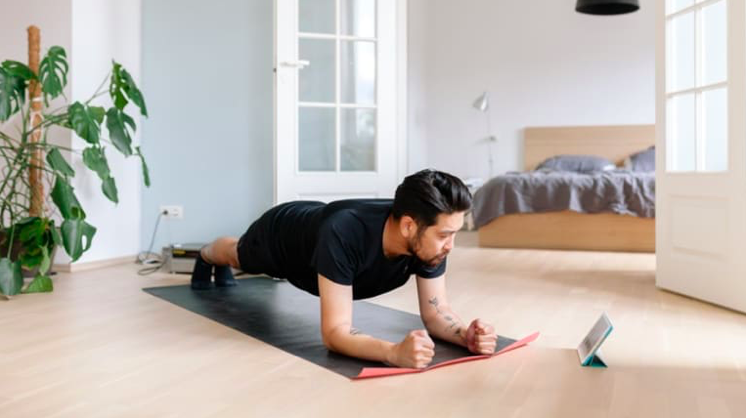 So how does a Telehealth session happen? Telehealth sessions are scheduled in exactly the same way that other sessions are, directly with the therapist, or online. You then receive a confirmation email with a linkto a HIPAA compliant, secure website with the simplest program imaginable, called doxy.me . The website works like this: at the time of your appointment you simply click a on link you’ve been given when scheduling a session. (You can click the link here to enter my virtual clinic right now if you like, just to see what it looks like). During the appointment, you may sit in front of your computer to chat with the therapist, and angle the camera of your laptop or smartphone, or stand in front of your desktop computer, so that the therapist can see you, examine you and direct you through exercises. 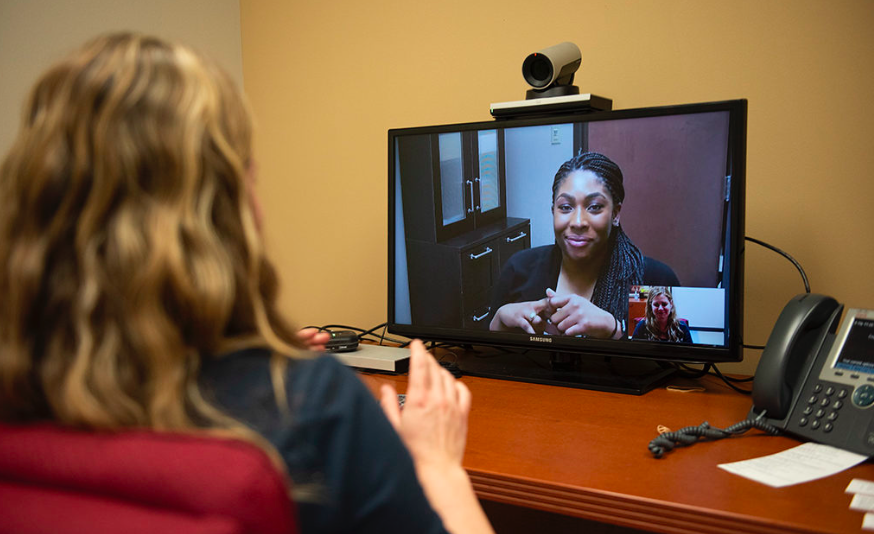 __________________________________________________________________________________________________ CLICK HERE FOR SIMPLE INSTRUCTIONS FOR YOUR PHYSICAL THERAPY TELEHEALTH SESSION. ___________________________________________________________________________________________________________ Is Telehealth covered by insurance? The good news is that Telehealth is covered by many insurers. Blue Cross and Blue Shield state on their website that they cover these services, and United Healthcare Medicare Advantage plans just announced that they cover Telehealth services as well. Traditional Medicare will hopefully follow suit. As always, it’s a good idea to call your insurance company and ask them directly about Telehealth services (note: traditional Medicare covers something they call e-visit, which is simply a phone call, and is not to be confused with Telehealth). Telehealth services can, like all other services, also be accessed on a self-pay basis. In response to the financial uncertainty many are currently experiencing I am offering pro-rated half hour Telehealth services as well. These shorter appointments are only available to established patients. Can Telehealth appointments be used in conjunction with physical appointments? This may actually be one of the best ways to use Telehealth services. After the initial appointment a patient may not need to be seen in a physical office for every visit, and can effortlessly connect with their therapist from home, their office or while traveling. However, from time to time the patient may have an issue that ideally would be dealt with in person, eg when a manual treatment technique is indicated. If you can click on a link, you can use Telehealth. I’m not very technologically savvy. What happens if I schedule a Telehealth appointment and can’t figure it out? If you can click on a link, you can use Telehealth. The program is extremely simple, and there are just a couple of very simple prompts to follow. That said, if you experience some difficulties with your computer, your internet or any other related issue, don’t worry, we’ll just try again later. You won’t be on the hook for an appointment you showed up for, but couldn’t benefit from because some technical difficulty got in the way. I have my home exercises. Won’t that be enough? Performing a set of home exercises that you were once given is almost never enough in the long run to give you the benefits of physical therapy: avoiding and decreasing pain, ensuring improved and continued function, avoiding injuries and falls, optimizing health, and ensuring that you don’t lose it. Human function is quite complex, and simply performing three or four exercises and expecting them to carry over into your functional movements, your everyday life, is not quite realistic. Due to the complexity of our wonderful, adaptable bodies, that nevertheless remain vulnerable to the challenges of our modern lifestyles, it is simply not possible to teach a patient everything that is needed to meet the challenge of becoming and staying healthy during a few encounters. This is why Physical Therapy is traditionally delivered as a long, or shorter, series of appointments, that build on one another, as understanding increases and function improves, and is often supplemented by less frequent visits as function has been recovered, to keep you on the right track and address smaller difficulties along the way. Home exercises tend to, without supervision and correction, morph into something less effective over time. The patient’s ability and skill grows, and exercises need to be progressed. New symptoms may appear, and need to be addressed, the patient needs to gradually learn how to apply their growing stability, strength or range of motion to their everyday activities, and, speaking of every day: every day tends to bring new challenges, new movements: a trip, lifting visiting grandchildren, a race you’re training for, a new job, a new hobby. As you work your way out of an injury and back to full function, you will need help modulating your activity level —“does this ache mean stop or that I’m getting stronger?” Life is ever changing and fluctuating, and our response needs to mimic that. If you are new to Telehealth, you will be surprised how easy and natural it soon feels! How can I use Telemedicine? How will I know if it will work for my needs? I am, as always, here to answer any questions you may have! Email me, text me (847-208-8063) or call me, or simply schedule an appointment now.
14 Comments
 Use it or loose it is an admonition we hear often when it comes maintaning lean tissue (muscle and bone). It It is probably one of the better examples of a a cliche, but the saying does communicate an important truth: our bodies are made for activity, not passivity, and will deteriorate at a surprising rate during inactivity. This is especially true for older adults, who lose lean tissue much more rapidly than the young during periods of physical inactivity. Loss of muscle mass due to prolonged (which may be defined as as little as a week or two during bed rest) inactivity predominantly affects the largest muscles of the body, the muscles of the legs and buttocks. Inactivity also poses a significant threat to our health in other ways, and contributes to everything from cancer to heart disease. It has been even estimated that physical inactivity causes as many deaths as smoking, hence the recent jingle “sitting is the new smoking”. In the population of people 65 years of age and older, decreased levels of physical activity contribute greatly to the epidemic of falls and subsequent injuries. A third of all individuals 65 and older fall each year, and in half of these folks the falls are recurrent. During this time, when the entire population has been encouraged to practice social distancing and work from home, and gyms have closed and everyday movement been minimized, we risk limiting our physical activity and exposure to fresh air and sunlight to levels that pose a threat to our fitness, health and safety. Physical inactivity also increases pain levels in patients with chronic pain. In all individuals, but especially in those with hypermobility disorders it is imperative to not allow the system of stabilizing muscles to atrophy and weaken due to inactivity, as this is a common turning point for increased pain and dysfunction. Exercise has a multitude of amazing effects on our body and mind, and we’d do well to harness these benefits at a time when we all need to support both our mental and physical health. Movement and resistance training to the rescue Physical activity has an effect on almost every organ and tissue in the body. It supports immune system function, is important for mood and general wellbeing and, when performed outdoors, strongly contributes to circadian rhythm entrainment (ie our daily sleep-wake cycle). The best intervention to prevent and treat loss of lean tissue is resistance exercise, which simply means that your muscles are straining against an external force, be it a weight, an exercise band or the weight of your own body moved against gravity, when coupled with an appropriate protein intake. However, sitting all day and only moving once a day for exercise may not do the trick, either, as there is some proof that sitting 13 hours a day or more, easily accomplished especially during social distancing, may undo all the metabolic effects of the exercise and leave you with the elevated levels of triglycerides and blood sugar that exercise normally counteracts. For those aged 65 years and older, it is also recommended that protein intake be increased from 0.8g/kg/day to 1,2 g/kg/day in order to maintain lean body mass. So how much activity is enough to confer beneficial effects? Is picking one activity that you like enough? Think about it this way: what we call exercise is our way of compensating for the lack of spontaneous movement and hard work that evolution has prepared us for, and our bodies consequently expect. Therefore, engaging in only one type of movement, such as walking, is not enough in order to emerge from temporary isolation and inactivity unscathed. Instead, we need variety. All types of physical activity have distinct effects and benefits. The best intervention to prevent and treat loss of lean tissue is resistance exercise, which simply means that your muscles are straining against an external force, be it a weight, an exercise band or the weight of your own body moved against gravity. DAILY EXERCISE ROUTINE What follows is a program that will help meet your body’s need for frequent movement through the day, movement for circulation, cardiovascular health and immune system support, and maintenance of lean body mass. It is divided into three sections, with the section for strengthening divided into two subcategories. The sections offer activities of varying levels of difficulty and a chance for variety. Choose the most appropriate levels for you --you should be working hard but be able to maintain good form, or quality of movement,-- and make sure to pick one choice from each group. All exercises should be pain free, but mild soreness at the beginning of an exercise is fine. Follow the traffic light guidelines to distinguish between innocuous soreness and pain as a sign to stop. Two exeptions to be aware of: perform all three stretches daily, but perform strengthening exercises only every other day if you are able to perform them at an intensity that gives you a bit of exercise soreness the following day. GROUP 1- Frequent movement through the day
GROUP 2 - “Aerobic exercise” or prolonged higher intensity movement Best if performed outdoors when practical and appropriate (note that future directives for social distancing may include avoiding time outdoors, and even in the absence of such directives you should follow the advice calling for keeping a distance of at least 6 feet between yourself an others).
GROUP 3- Strength training The most important muscles to strengthen are the muscles of the buttock and legs. Stabilization exercises:
GROUP 4 - Flexibility
All types of physical activity have distinct effects and benefits. No one type of activity offers all the benefits you need. IMAGE GALLERY FOR THE EXERCISE PROGRAM Trunk stabilization exercises
Trunk stabilization: lie on your back, pace a pillow under your head as needed. Gently tighten pelvic floor, keeping hips and knees bent as shown in first photograph. While making sure to not allow low back to arch, slowly move one leg at a time away from the body, and return. Emphasize correct form, not moving the leg so far out that you arch your back. (Second photo shows advanced progression, initially lower your leg only few inches. Progression depends on your ability to keep your low back stable against the floor)
The single leg squat is a progression of the above lunge shown in the previous photo. Place one leg on a bench, sofa or chair and lunge down, again keeping in mind that the knee must track in line with the foot, not to the inside of it it! Prioritize correct form over trying to squat more deeply. Stretching or "Strelaxing" (aka a relaxed stretch) Succesful stretching means relaxing muscles, not pulling them. The stretching position allows you to feel the muscle, the stretch itself consists simply of your conscious relaxation of the muscle. Think "melting', or imagine the body part growing heavy. Hold stretches for 2 minutes or more. Chest stretch (specifically for the small chest Mobilization of the upper back. Roll up a yoga muscle, pectorals minor, that greatly contributes mat, and place it under your upper back (you to limited shoulder movement). Lie down as can vary the exact position for bets effect). shown, place a pillow/pillows under your arm as Bend back to straighten the convexity of your needed. The arm must be supported.Tip hips upper back as shown. This is a back and forth towards opposite side to increase stretch motion, not a static stretch. as needed. A comfortable variation is simply placing a folded up towel under this part of your back and relaxing with arms stretched out and hips and knees extended, or, if needed, bent. Hip flexor stretching. Choose either option as illustrated above. The stretch is diffuse and felt across your groin area. Remember to remain comfortable and relaxed. Stretching is about relaxing muscles, not pulling or forcing. Those hypermobile individuals whose hips joint tend to subluxate forward should be careful not to lunge forward to far and too deeply while performing a single leg squat or walking or stationary lunge, and should keep their upper leg supported by the bed in the image above, completely avoiding hip stretch option number two. ***** Remember: there is still much to enjoy, and stressful times can also contain good times. Enjoy the things you can do, things you perhaps now have the time to do. Enjoy the time with, and exercise together with, your family members. By balancing activity with relaxation you will support both your musculoskeletal system and your emotional health Related note: the significant difficulty I experienced finding photos for this article, correctly demonstrating a particular exercise or stretch, reminded me of how much incorrect advice is circulating on the internet. Be discerning when taking in such information, and always consider the source. New threats, powerful defense We’re living in times when our trust that the healthcare system can offer us fast and reliable solutions for any pathology is waning. We’re facing antibiotic-resistant bacteria and an alphabet soup of new viral epidemics--SARS, MERS, H1N1, Zika, Bird and Swine flus, and now COVID-19--with no pre-existing therapies or readiness, prompting us to seek solutions elsewhere. Panic and hoarding are understandable, but not very protective behaviors. Fortunately, drugs and vaccines are not our only defense against microbes. Like all species we, too, have evolved in a world full of microbes and developed our own innate defenses against them. Even when medical and pharmaceutical treatments are available, they are largely dependent on the strength of the body’s innate workings in order to be successful. Instead of emptying store shelves, let’s arm ourselves with a few facts about the power of the immune system so that we can do our best to support it in ourselves and in our loved ones. The immune system - another miracle at work We are continuously exposed to pathogens, ie microbes that have the capacity to cause us harm. They evolved long before plants and animals did, and because of this all species in existence have evolved with defensive strategies against potential infections. This is what we refer to as our immune system. The immune system is spread throughout the body and involves many types of cells, organs, proteins, and tissues all working together to keep us safe from harm. One of its crucial features is that it can distinguish our own tissue from foreign tissue — self from non-self. An antigen is any substance that can spark an immune response. In many cases, an antigen is a bacterium, fungus, virus, toxin, or other foreign body, but it can also be one of our own cells that is faulty or dead. White blood cells of various types play a central role in recognizing, remembering and destroying these foreign invaders. Certain types of white blood cells make antibodies, which mark particles as foreign invaders, while other types of white blood cells kill and engulf the invader, and dispose of it. Most of the time our immune system works so well that we don’t even notice it. We are not aware of the cancer cell it destroyed, the cold virus it killed so that we didn’t get sick, or the balance it’s striking between protecting us from non-self particles while sparing our own cells. But like any system, its delicate balance can be affected by many aspects of our lifestyle. 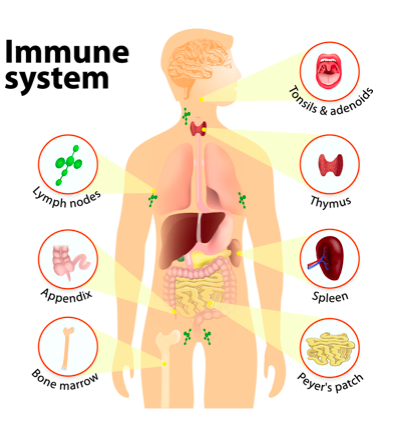 What impacts the immune system? Immune system function varies over the course of life, with newborn babies depending on antibody protection through nursing, many lifestyle factors common among adults taxing the immune system and many, although not all, people over the age of 65 experiencing some immune dysregulation that makes them less able to respond to immune challenges. This also manifests as a decreased ability to create antibodies and a resulting diminished response to vaccination in older adults. Medications such as cortisone, other immunosuppressant medications, chronic stress, malnutrition, loneliness, overexertion, a sedentary lifestyle, overuse of alcohol and poor sleep and irregular sleep/wakefulness cycles (aka circadian rhythm dysregulation) are some of the more common factors that can tax this powerful system and prevent it from effectively defending us from pathogens. Can you “boost” your immune system? The answer is generally “no”, but more importantly, you wouldn’t want to. An overactive immune system means feeling inflamed, unwell, allergic or experiencing an autoimmune reaction. What you do want, however, is to make sure your immune system functions properly. The effects of nutrition on your immune system Not unlike other bodily functions, the immune system is dependent on certain nutrients. While few individuals in the developed world are dying of hunger, lifespan and quality of life may for many be affected by poor nutrition. It has been estimated that 35% of those aged 50 years or older in Europe, USA and Canada have a demonstrable deficiency of one or more micronutrients . Children may suffer from vitamin and mineral deficiencies due to selective eating habits or lack of sunshine, and the elderly tend to eat less food, but still require the same amounts of micronutrients (and even more protein than younger individuals), which can make for a tricky equation to solve. Micronutrients that are especially important for immune system function include:
Please note, however, that healthy eating habits and supplementation can only support normal immune system function by supplying it with the building blocks it needs to function. You can not build some kind of super immunity by supplying your body with higher than physiologically necessary amounts of these nutrients, or any other interventions either, just like, while sleep deprivation can make you more susceptible to infections, sleeping more than necessary won’t increase your resistance to infections. Inflammaging Inflammation and aging seem to go had in hand, leading to the concept of inflammaging, an imbalance between inflammatory and anti-inflammatory networks contributing to common age-related changes, including immunosenescence, or the aging of the immune system, which, as mentioned, contributes to the increased susceptibility of many older individuals to infectious disease. Anti-inflammatory nutritional interventions can therefore be useful. Fortunately, the aging of the immune system is quite malleable, and affected by both lifestyle choices and medications. In patients with diabetes the immune system is suppressed by the elevated blood sugar levels. Metformin is a drug commonly used to counteract this phenomenon. The herbal compound Berberine has similar effects, leading to speculation that it could help non-diabetics keep blood sugar levels at ideal levels and thus support the immune system. Physical activity exerts an anti-inflammaging effect via several mechanisms. Studies have also shown that individuals who perform regular exercise appear to be at a reduced risk of mortality from infections. Exercise also tends to raise Human High Density Lipoprotein (HDL) levels (levels of what many like to call “good cholesterol”). HDL has both anti-inflammatory and anti-oxidative effects. Other ways of attenuating inflammaging include avoiding caloric excess and eating a nutritious diet. Diets like the Mediterranean diet or other personalized diets with nutritional supplementation with micronutrients and limonene have been shown to both decrease inflammation and improve immune responses. In summary…. Anyone wishing to improve their body’s resistance to infection and illness, whether chronic or acute, can benefit from first and foremost supporting their body’s basic functions by ensuring sufficient levels of nutrients through both diet and supplementation, as well as observing other healthy habits and practices that allow the body to function optimally. Even when a vaccine exists for a particular disease, it is the person’s own immune system that creates the antibodies, and a weak immune system is less able to do so, leading to an antibody response after vaccination of only 17–53% among the elderly. Regular sleep/wake cycles supported primarily by appropriate exposure to light and darkness, supporting sleep, which I’ve written about here, movement, spending time in nature and avoiding loneliness and stress are all powerful tools. Older individuals need to be especially mindful of taking good care of their immune systems, and this includes taking steps to reduce inflammaging. Exercise regularly, move often, give yourself reasons to laugh even more often, eat well and supplement wisely. Did I forget anything? Comment with suggestions here! |
Archives
February 2024
|

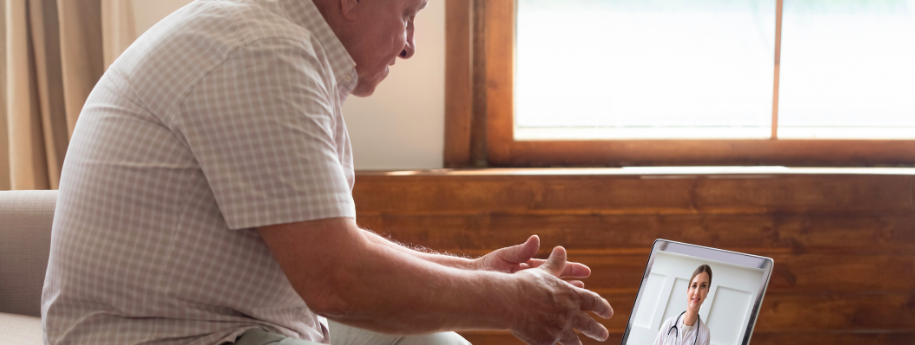
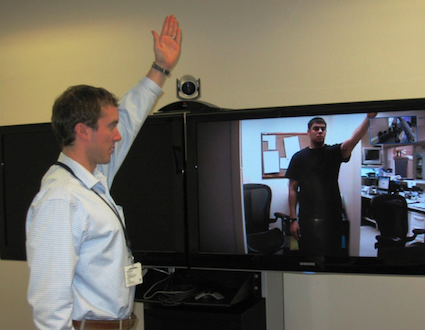
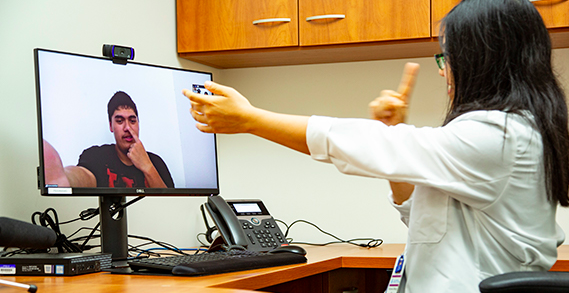
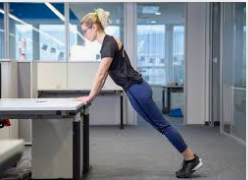
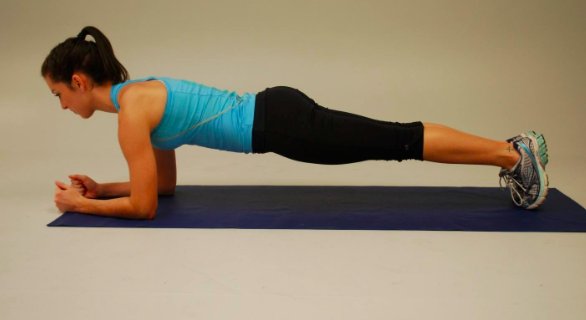
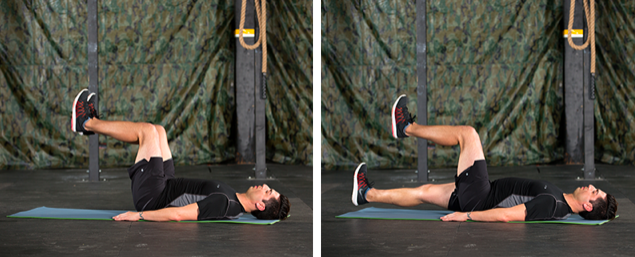
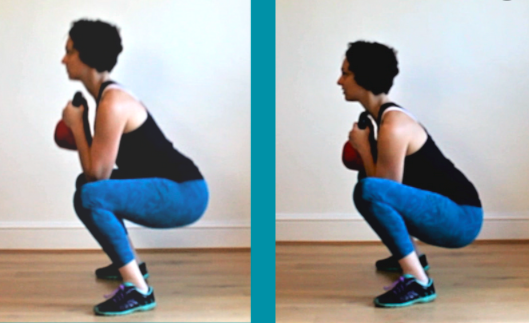
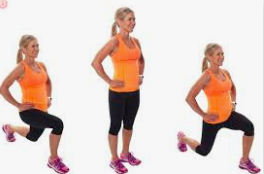
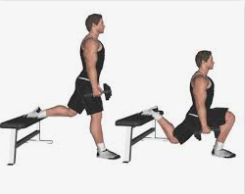
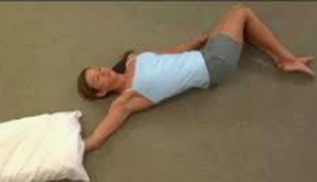
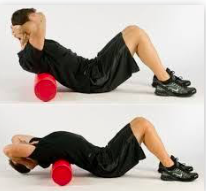
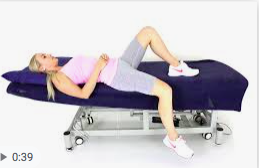
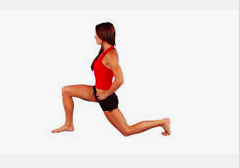


 RSS Feed
RSS Feed